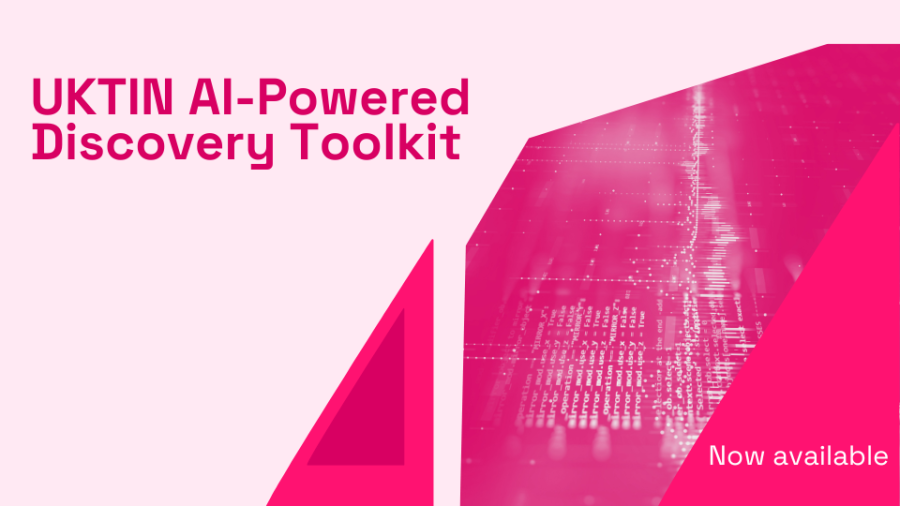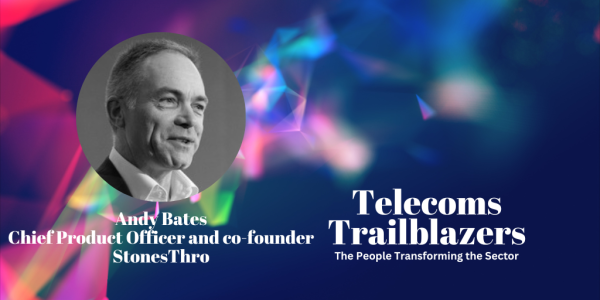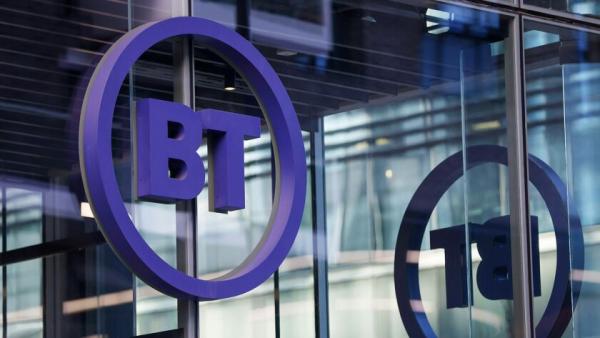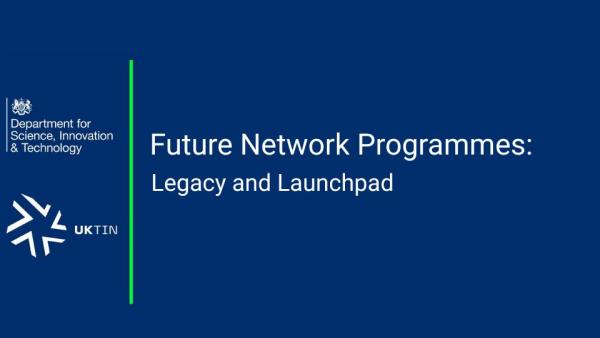
One of UKTIN’s core goals is to make the UK telecoms sector easier to navigate, whether you’re an international organisation looking to break into the market, an established UK player who wants to better understand where certain research is being conducted, or a student looking to identify which university best aligns to their career ambitions.
Since 2023, the team at University of Bristol have worked on developing a toolkit that harnesses the power of large language models to help map the UK telecom’s ecosystem. Undertaking this is a large project so the team has focused on using publicly funded projects in the UK telecoms space as a starting point.
Following showcases of the prototype at MWC, and the beta version at May’s Telecoms Innovation Ecosystem Conference, today we are launching the full toolkit.
The AI-powered R&D Discovery Toolkit is available to all registered UKTIN users - at no cost - and can be accessed here.
UKTIN sat down with Tom Barratt, Savvas Mantzouranidis and Lon Barfield, the team behind the toolkit, to find out more how it’s been developed and what exactly it enables users to do.
Can you tell us about the discovery toolkit: what are we launching today?
Tom: UKTIN is a collaborative initiative that brings together telecoms operators, technology providers, and research institutions to foster innovation and accelerate the development of next-generation technologies. The network at its heart aims to facilitate collaboration, knowledge sharing, and the creation of new solutions that benefit consumers and businesses across the UK. In support of this, for the past nine months, I have led a small team developing a discovery toolkit for UKTIN. As the System Architect, I have worked alongside UX designer Lon, Software Developer Savvas, and two Data Scientists, Harry and Dan.
The Discovery Toolkit is a powerful resource for uncovering insights into the UK telecoms sector. Imagine wanting to know which universities are currently researching testbeds in Massive MIMO. This can be a challenging task using online resources, requiring you to navigate multiple pages and invest significant time. Our Discovery Toolkit solves this problem by providing most of the answers to such questions. By leveraging the power of AI, we can instantly summarise vast amounts of data and deliver actionable insights, eliminating the need for specialised knowledge.
Why is there a need for something like this?
Savvas: The toolkit addresses a critical gap in the UK’s telecoms sector by consolidating fragmented information into a cohesive, user-friendly platform. Currently, the telco industry suffers from dispersed data across numerous sources, making it challenging for professionals to stay updated on industry/academia developments, trends, and opportunities. This fragmentation not only hinders innovation but also slows down decision-making and the establishment of strategic partnerships. To address these challenges effectively, the UKTIN AI Discovery Toolkit offers a comprehensive solution.
By aggregating data from a curated list of reliable sources, the platform provides unified access to comprehensive insights, saving users time and effort. Its AI-driven semantic search and large language models enhance data discoverability, allowing users to easily define their interests and access the latest information. The tool's interactive data interpretation feature, enabling users to "chat" with the data, transforms raw information into actionable insights, making complex data accessible to all.
Additionally, advanced visualisation features like automatic chart generation and map plotting present information intuitively, aiding in understanding and strategic planning. Ultimately, the platform fosters a more connected and informed community, empowering users to discover opportunities, stay ahead of trends, and establish valuable partnerships, driving innovation within the sector.
Can you tell us a little bit about how the tool has been developed?
Savvas: Since the beginning, the platform has evolved from a simple chat interface into a suite of tools. The core idea however has remained the same: to enhance discoverability of telco-related information. To achieve this, the development has involved several sophisticated steps, from data integration to enhancing user experience (UX).
To collect information from multiple data sources, we developed custom software pipelines tailored to fetch data from each respective source efficiently. Following this, we performed a process known as "embedding", which involves generating a numerical representation of the meaning of each data point. This crucial step allows us to perform semantic searches on the collected data, significantly improving the relevance and accuracy of search results.
Integrating large language models (LLMs) into the application was the next pivotal phase. These models were given access to our curated data, enabling users to conduct more efficient and precise searches, based on their topics of interest. The AI capabilities allow users to interact with the data in natural language, making the search process intuitive and powerful.
Lon: Initially it was envisioned that the UX design would be simple. The first versions of the tool revolved around a chat style interaction and the only UX was a question-and-answer dialogue.
After a while however it became apparent that we needed a more sophisticated solution. The data set we were using was restricted, as were the scope of questions that users could ask. We needed the best of both worlds: the ability for the user to refine a search of the data to yield a small, well defined, set of data which they could then view in different ways and analyse with the help of a dialogue with AI.
The big challenges we faced with this ‘search and analyse’ approach were around managing the complexity of the underlying technologies; giving the user access to them without overwhelming them with all the technical details. Even down to the wording at the interface which had to be chosen to avoid introducing too many concepts to the user in one go.
What do you anticipate people will use the tool for?
Lon: The Toolkit will drive innovation by strengthening and building connections within the telecoms ecosystem.
Digital Catapult, with input from University of Bristol, has already used it to conduct a body of user research that included the relationships between different roles within the ecosystem. They identified that there were many existing relationships that needed strengthening and new relationships that players desired. The resulting picture was an ecosystem that was rich in diversity but thinly connected.
The AI Discovery Toolkit will fulfil this need for connection and people in the ecosystem will use it to discover organisations and people who are active in particular areas, with a view to collaboration, joint funding applications, sharing research, using resources/facilities etc. While investors will be able to get insights and scope different market sectors. Early stage start-ups will be able to see who is doing related work and what testbed services there are in their location. It really does offer a multitude of different uses and benefits.
What is the one thing you would like people to know about the tool?
Tom: One of the most impressive things is how it leverages AI to extract information from the results you get. It's like having a powerful AI assistant working behind the scenes to make sense of everything, getting you started on your queries and giving a really defined solution, so you are not staring at a blank screen wondering where to start.
Savvas: Personalisation and discoverability are the two highlights in my opinion. In a matter of seconds, users get presented with an AI-powered interactive dataset that is tailored to their topics of interest. Not only that, but the dataset includes information from multiple sources that would otherwise require a lot of manual effort to collect.
Lon: By searching you can come up with a good selection of projects that you can ask AI to summarise and generate valuable insights from. There are many systems that summarise things, but this combination of search and analysis really leverages the hybrid skills of humans and AI. When you read the resulting insights, you realise that you could only get the same insights yourself if you were to sit down for a day, with a cup of tea, and read all the projects and hold them in your head and pull out the interesting themes and questions.
As people use the tool, there will inevitably be identification of further potential features and use cases – how can people feed back to you about what they’re doing and any suggested improvements?
Lon: The team already has many potential features and ideas on the list for consideration. More direct user feedback comes in two ways now that the tool has gone live:
Firstly, implicitly, through monitoring the use of the Toolkit. With a range of monitoring tools we can see how it is being used and identify some of the issues and barriers in its use.
Secondly, we have opened more explicit channels where we use pop-up tools to engage with users and ask them if they would be willing to answer questions about their use of the service.
Also, at public demos there has been an interest from areas beyond telecoms, pointing to this being a solution to a more general problem in innovation and technology.
As well as suggested improvements, what directions could the toolkit take in the future as it develops?
Lon: In the near future, we aim to improve the accessibility of our current data sources. Our current efforts have been project-focused, but we can expand our focus to be more organisation or topic area oriented. This will allow users, for example, to explore a particular organisation and view the work being done within different areas.
At an abstract level we are solving the problem of wanting to ask complex questions of a collection of disparate data-sources. This problem is almost universal in the world of data. There are many examples of it and many examples of start-ups offering the service in highly specialised, niche industries. Our tool offers a more general solution to the problem that could be adapted rapidly to any context.
Tom: The long-term plan is to expand our data sources. Leveraging the skills gained during the current iteration of the tool, we can incorporate additional data sources such as standards, patents, publications, and company information including development stage and descriptions. This will enable users to explore a wider range of information within the tool. For example, users could find an organisation and view its patents alongside current research projects, providing a more comprehensive understanding of its activities.
You can access the Toolkit here, using your UKTIN account details. If you’re not yet registered with UKTIN you can do so here.









